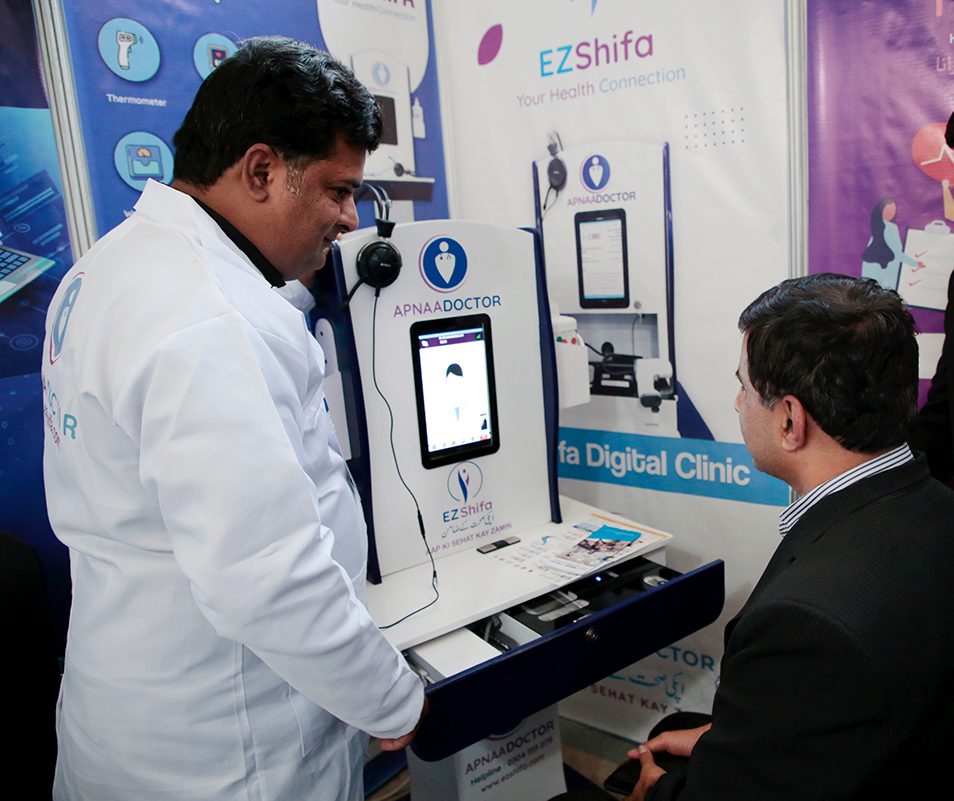Table of Contents
Togglehow digital clinics are revolutionizing healthcare. In recent years, the healthcare industry has undergone a significant transformation, driven largely by advances in technology. Digital clinics, also known as telehealth or telemedicine services, have emerged as a groundbreaking solution, revolutionizing how healthcare is delivered and accessed. This article explores the myriad ways digital clinics are transforming healthcare, enhancing patient care, and addressing challenges in the traditional healthcare system.
What Are Digital Clinics?
Digital clinics leverage technology to provide healthcare services remotely, eliminating the need for physical visits to a healthcare facility. These clinics use a combination of video conferencing, mobile apps, online platforms, and connected devices to facilitate consultations, diagnoses, treatment plans, and follow-up care. By bridging the gap between patients and healthcare providers, digital clinics offer a convenient, efficient, and cost-effective alternative to in-person visits.
Key Benefits of Digital Clinics
-
- Increased Accessibility:
-
- Benefit: Digital clinics break down geographical barriers, making healthcare accessible to individuals in remote, rural, or underserved areas. Patients can connect with specialists and receive quality care regardless of their location.
-
- Increased Accessibility:
-
- Convenience and Flexibility:
-
- Benefit: Patients can schedule consultations at their convenience, reducing the need to take time off work or travel long distances. This flexibility is particularly beneficial for those with chronic conditions or mobility issues.
-
- Convenience and Flexibility:
-
- Cost-Effective Care:
-
- Benefit: Digital clinics can reduce healthcare costs by minimizing the need for physical infrastructure and reducing overhead expenses. Patients also save on travel costs and can often access care at lower fees compared to traditional visits.
-
- Cost-Effective Care:
-
- Enhanced Patient Engagement:
-
- Benefit: Telehealth platforms often include features such as electronic health records (EHR), appointment reminders, and patient portals, which enhance patient engagement and empower individuals to take an active role in managing their health.
-
- Enhanced Patient Engagement:
-
- Continuity of Care:
-
- Benefit: Digital clinics facilitate continuous monitoring and follow-up care, ensuring patients receive consistent and timely attention. This is particularly crucial for managing chronic diseases and post-surgical recovery.
-
- Continuity of Care:
-
- Reduced Risk of Infection:
-
- Benefit: By minimizing in-person interactions, digital clinics help reduce the risk of infectious disease transmission, which has been especially important during the COVID-19 pandemic.
-
- Reduced Risk of Infection:
Technologies Driving Digital Clinics
-
- Video Conferencing:
-
- Enables real-time, face-to-face consultations between patients and healthcare providers, replicating the experience of an in-person visit.
-
- Video Conferencing:
-
- Mobile Health Apps:
-
- Provide patients with tools to monitor their health, manage medications, and communicate with healthcare providers. Apps can also offer mental health support and lifestyle management.
-
- Mobile Health Apps:
-
- Wearable Devices:
-
- Track vital signs, physical activity, and other health metrics. Data from these devices can be shared with healthcare providers for remote monitoring and personalized care plans.
-
- Wearable Devices:
-
- Artificial Intelligence (AI):
-
- Enhances diagnostic accuracy, predicts patient outcomes, and personalizes treatment plans based on vast datasets. AI-powered chatbots can also provide initial assessments and triage.
-
- Artificial Intelligence (AI):
-
- Electronic Health Records (EHR):
-
- Centralize patient information, making it easily accessible to both patients and healthcare providers. EHRs improve care coordination and streamline administrative processes.
-
- Electronic Health Records (EHR):
Impact on Healthcare Providers
-
- Expanded Reach:
-
- Healthcare providers can reach a broader patient base, including those in remote or underserved areas, without the constraints of physical location.
-
- Expanded Reach:
-
- Improved Efficiency:
-
- Digital clinics streamline administrative tasks, reduce no-show rates, and optimize appointment scheduling, allowing providers to focus more on patient care.
-
- Improved Efficiency:
-
- Better Work-Life Balance:
-
- Telehealth can offer healthcare professionals more flexible working hours and the option to work remotely, contributing to better work-life balance and job satisfaction.
-
- Better Work-Life Balance:
-
- Enhanced Data Utilization:
-
- Access to comprehensive patient data through EHRs and wearable devices allows providers to make informed decisions, track progress, and adjust treatment plans more effectively.
-
- Enhanced Data Utilization:
Challenges and Considerations
-
- echnology Access and Literacy:
-
- Not all patients have access to the necessary technology or the digital literacy to use telehealth services effectively. Bridging this gap is essential to ensure equitable healthcare access.
-
- echnology Access and Literacy:
-
- Regulatory and Licensing Issues:
-
- Telehealth services must navigate complex regulations and licensing requirements, which can vary by region and affect the delivery of cross-border healthcare.
-
- Regulatory and Licensing Issues:
-
- Data Security and Privacy:
-
- Protecting patient data is paramount. Digital clinics must implement robust security measures to safeguard sensitive health information and comply with privacy regulations.
-
- Data Security and Privacy:
-
- Integration with Traditional Care:
-
- Ensuring seamless integration between digital and traditional healthcare services is crucial for providing comprehensive and coordinated care.
-
- Integration with Traditional Care:
Future of Digital Clinics
The future of digital clinics looks promising, with continued advancements in technology and growing acceptance among patients and healthcare providers. Key trends to watch include:
-
- Integration of AI and Machine Learning:
-
- Enhanced diagnostic tools, personalized treatment plans, and predictive analytics will further improve patient outcomes and efficiency.
-
- Integration of AI and Machine Learning:
-
- Expansion of Telehealth Services:
-
- Beyond primary care, telehealth will increasingly encompass specialties such as mental health, dermatology, and physical therapy.
-
- Expansion of Telehealth Services:
-
- Enhanced Patient Engagement:
-
- Innovations in mobile health apps and wearable devices will empower patients to take greater control of their health and wellness.
-
- Enhanced Patient Engagement:
-
- Global Collaboration:
-
- Digital clinics will facilitate global collaboration among healthcare providers, enabling the exchange of knowledge and best practices across borders.
-
- Global Collaboration:
-
- Improved Accessibility:
-
- Efforts to enhance digital literacy and expand internet access will make telehealth services more accessible to all populations.
-
- Improved Accessibility:
Conclusion
Digital clinics are revolutionizing healthcare by making it more accessible, convenient, and cost-effective. Through the use of advanced technologies, these clinics provide high-quality care, improve patient engagement, and enhance the overall efficiency of the healthcare system. As the adoption of telehealth continues to grow, digital clinics will play an increasingly vital role in shaping the future of healthcare, ensuring that quality care is within reach for everyone, regardless of their location.
Are you ready to experience the benefits of digital clinics? Explore telehealth services today and take control of your health with convenient, accessible, and high-quality care. leo.


